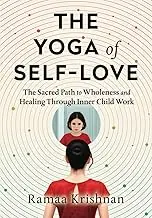WHEN FAMILIES NEED TO MAKE AN AGONIZING CHOICE ABOUT A PARENT
 It’s an agonizing decision at any time: keep a parent at home or find somewhere else for them to live. Their parents Alzheimer’s disease has become more than can be managed. An elderly man has a stroke and his wife, elderly too, does not have the strength or health to provide for his needs. A senior is living alone, isolated, becoming dehydrated, and without access to regular healthy meals. For seniors, it is not always “safer at home.” During the Time of Covid-19, it is a desperate situation.
It’s an agonizing decision at any time: keep a parent at home or find somewhere else for them to live. Their parents Alzheimer’s disease has become more than can be managed. An elderly man has a stroke and his wife, elderly too, does not have the strength or health to provide for his needs. A senior is living alone, isolated, becoming dehydrated, and without access to regular healthy meals. For seniors, it is not always “safer at home.” During the Time of Covid-19, it is a desperate situation.
Frightening reports on long term care facilities lead you to believe that every nursing facility and assisted living is a death trap. This is not the case. I work with a large number of assisted living communities in Los Angeles and I can tell you, the reports are painting long term care facilities with an overly broad brush. The death rate for seniors in congregate living is terrible but so are the choices some families are confronting right now. We need to help them by clarifying the numbers so that they are better able to weigh the risks without the sensationalism driving the news.
Current reporting lumps nursing facilities and assisted living properties together. Yes, they both provide congregate living for seniors, but the composition of the populations is not the same.
There are two types of nursing facilities: Skilled nursing facilities (SNFs) and long-term nursing homes. A nursing home provides residential care to patients who need help with meals and their activities of daily life like ambulation, grooming, toileting and medication management. A skilled nursing facility (SNF) helps patients upon discharge from a hospital when they need further medical attention from trained professionals for continued recovery over a limited period of time. It is covered by Medicare or an individual’s private insurance.
AARP reports that about 70% of seniors living in nursing homes are low income, dependent on Medi-Cal to pay for their care. Seniors in this lowest income bracket are more likely to suffer from four or more chronic diseases, according to the CDC, as opposed to the general senior population which averages two chronic diseases. This makes them a particular risk for infectious diseases. Influenza, pneumonia and MRSA are continuing challenges within these environments, even outside of the current Covid-19 pandemic. Long-term nursing facility residents are the illest seniors in our community.
Significantly, more than fifty percent of them also have Alzheimer’s disease or some other form of cognitive impairment. With so many residents unable to comprehend the need for masks, social isolation, and frequent handwashing, dementia itself is a vector for the spread of Covid-19 in long-term nursing facilities.
The National Investment Center for Seniors Housing & Care (NIC) recently launched a Covid-19 Reach Tracker, drawing on publicly released information to compile statistics such as the number of senior living properties in a given metro area with positive Covid-19 diagnoses among residents or staff. They found that 43% of Metro Los Angeles’ 304 nursing properties reported at least one Covid-19 positive resident or staff.
In comparison, the numbers at assisted living are substantially less. Assisted living facilities, encompassing independent living, assisted living and memory care facilities, also provide meals, 24-hour care, and help with activities of daily life but in a residential, non-medical setting. NIC compiled data for these care communities in Metro LA and determined there are outbreaks in 37 of 198 facilities, or 19%. The total infection rate within these communities is 339 residents out of more than 19,000 seniors who reside at one of these properties.
Why the difference? Unfortunately, one of the primary differences is income. In Los Angeles, most assisted living facilities are paid for out-of-pocket. Medi-Cal runs something called the Assisted Living Waiver program which has been operating as a trial since 2009 to place seniors in assisted living instead of nursing homes. As of March 2020, there were about 5,700 people in the entire state of California on the ALW program for assisted living. Another 5,000 are on the waitlist.
In Metro Los Angeles, at the very lowest end of the price spectrum, assisted living costs $2500 per month and can go as high as $15,000 per month, depending on your needs and resources. According to the National Center for Health Statistics, the greater one’s income, the lower one’s likelihood of disease and premature death. Seniors go into assisted living needing help with their activities of daily life, medication management or 24-hour supervision, but, generally, they are healthier than those living in long-term nursing facilities. They do not have multiple chronic illnesses that are found in lower-income individuals.
Income also gives choice, including the choice to move out if the senior is not happy. This option is not necessarily available to seniors on Medi-Cal. For the most part, they live where the social service system dictates they live. They are captive to the system.
The competitive nature of the assisted living market results in better management of potential outbreaks. With private rooms, higher staff ratios, and more commodious spaces, assisted living communities are better equipped from the start to mitigate outbreaks if they occur. In interviews with most of the major communities in the area, I have found management takes steps way beyond those required by the CDC. Some are aggressively testing all residents and staff. Most are only selectively admitting new residents and quarantining any that are accepted. A few have closed their doors to new move-ins altogether. Many are requiring caregivers to quit other jobs to limit exposure and paying staff to stay home if they show symptoms.
So, which is safer? Keeping a parent at home in a multi-level house not equipped for a wheelchair when Dad has had a stroke? Leaving cognitively diminished Mom alone while the family works? Even during the Covid-19 outbreak, some seniors must move to assisted living and memory care facilities. The stress of these situations is heart-wrenching. Families need real information in order to understand the distinctions in this very big and confusing arena.
Sarah Ordover is a senior living expert with a particular specialization in dementia care. Sarah sits on the City of Los Angeles Task Force for Alzheimer’s Los Angeles and volunteers as a facilitator and public speaker for the organization. She holds CSA and CDC certifications in aging and dementia care and authors “The Senior Living Insider” blog. As owner of Assisted Living Locators in Los Angeles, a no-cost senior living placement service, Ordover helps families tackle the confusing subject of eldercare honestly and with compassion. Ordover attended American University and New York University. She lives in Los Angeles. Learn more about Sarah on her website:
https://assistedlivinglocators.com/care-advisor/losangeles
Listen to Sarah and Mark here:




